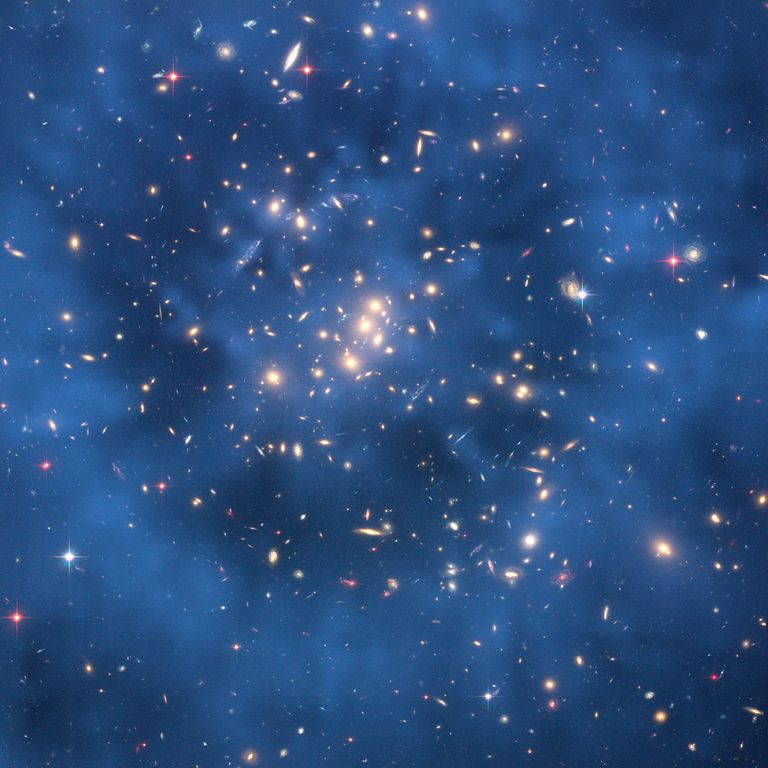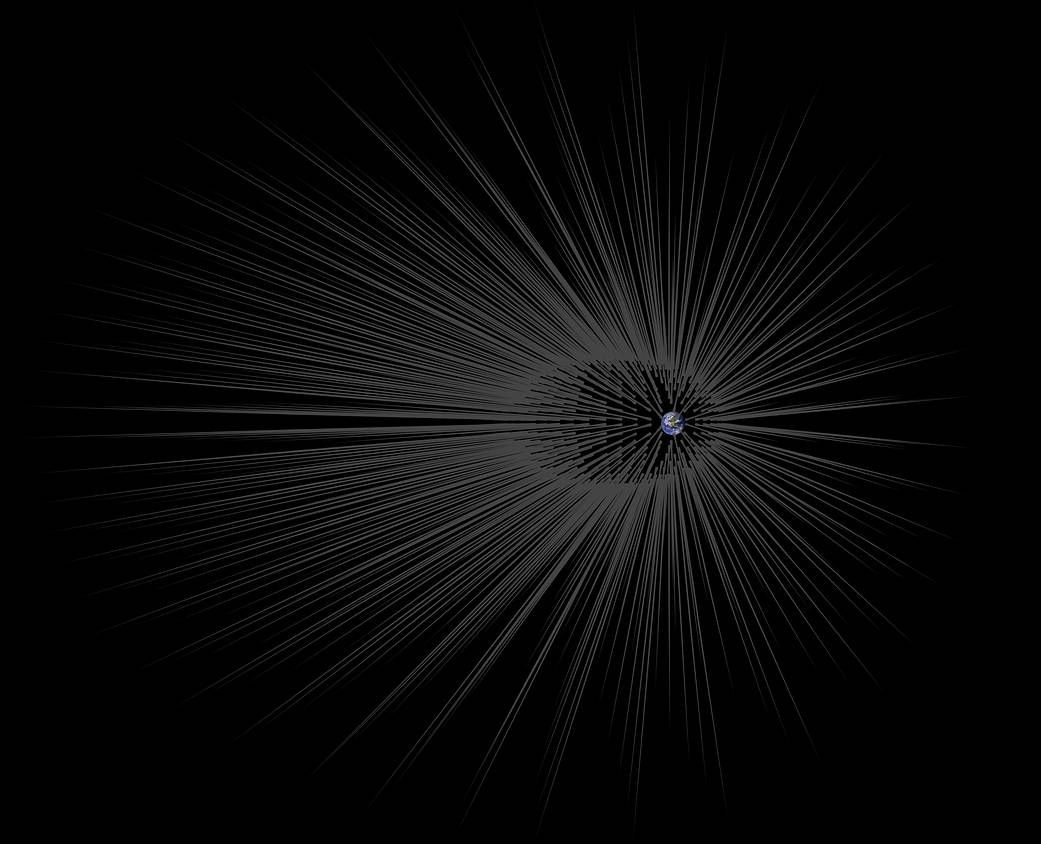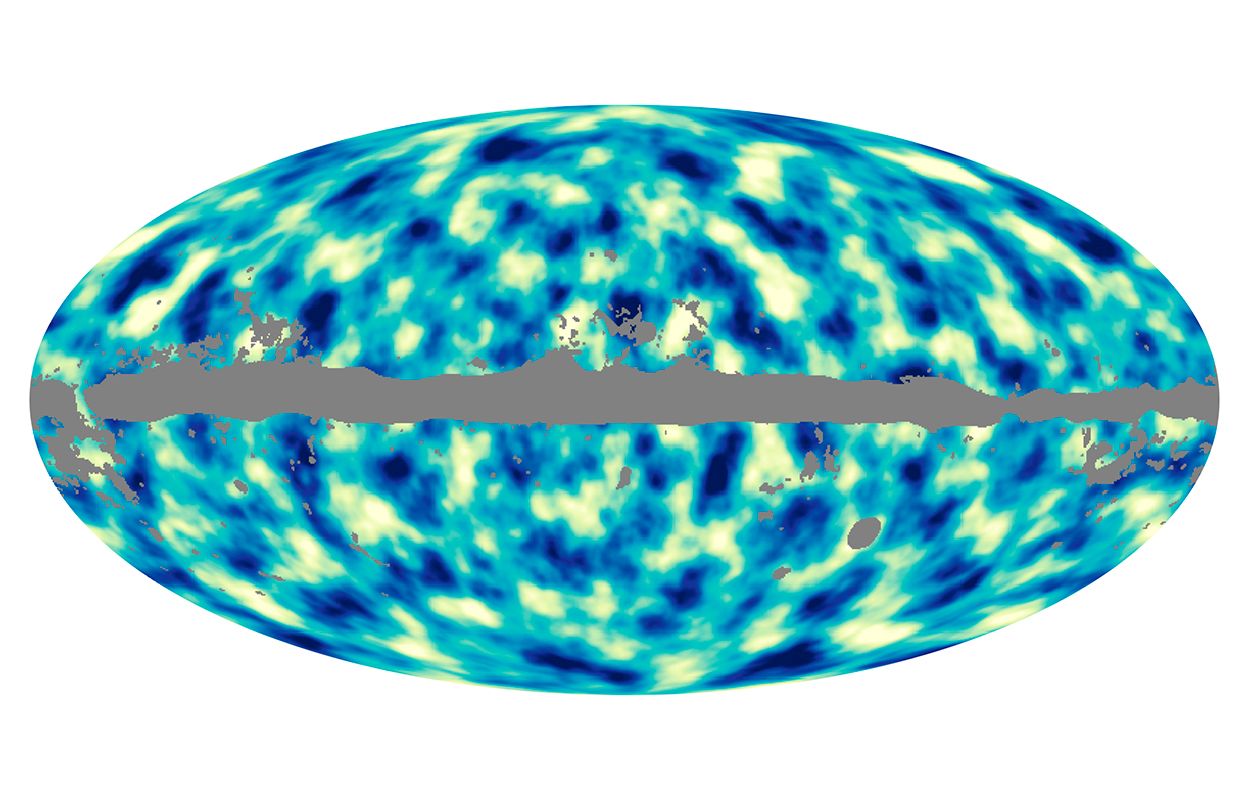
What are the odds of measuring dark matter?
The mysterious dark matter is back in the news again. Dr. Edward Belbrunot, an astrophysicist and mathematician, Princeton and Yeshiva University Professor, has published a study on The existence and gravitational effect of the famous dark matter in the universe. Published in the scientific journal Monthly Notices of the Royal Astronomical SocietyThe theory presented by the researchers is a true reflection of the search for dark matter, found in the Milky Way, and even in our own solar system. According to current predictions, it will be present in the universe, playing a major role in its expansion and the formation of galaxies.
>> Read also: The secret of galaxies without dark matter
Dr. Belbruno’s study investigates the force that dark matter exerts on celestial bodies traversing the universe. Because if dark matter doesn’t interact with it directly The so-called baryonic matterOn the other hand, it will have mass, which is likely to create a gravitational effect on various celestial bodies.
Oumuamua, Anomalies and Dark Matter
A mysterious cigar-shaped asteroid was the driving force behind Dr. Belbruno’s decision to study the effect of dark matter on baryonic matter. ” The uprooting of a galactic body in our solar system at a very high speed intrigued me deeply. So I started studying ‘Oumuamua as well as other phenomena like pioneer anomaly Dr. Belbruno explains.
The goal was to calculate Galactic Force Allowing an object to reach a speed similar to asteroid oumuamua When it reached the solar system in 2017, it was about 87.3 kilometers per second. This galactic force would account for the gravitational effects of baryonic masses on the order of 55% and dark matter mass of 45%. ” If dark matter penetrates into our observable universe, it will have an obvious effect on the speed of some celestial bodies. It will depend on their position in space! Within the Solar System, the force exerted by dark matter is dominated by planetary bodies and the Sun. But the force exerted by the latter will increase the further away from our star and the planets. Theories of an astrophysicist.
Thus, it will be possible for the probe to be disturbed by Galactic Force during its journey through the vacuum of space. And so the scientist evokes the anomaly of Pioneer, having drawn the attention of the engineers working on Pioneer 10 and 11. An unknown physical force caused a loss of speed of 1 km / h per year from the probes. The explanation could lie at the edges of the solar system, beyond Pluto and the outer planets. According to the study, by reaching the Oort cloud, the effect of dark matter will increase by about 30,000 astronomical units (one astronomical unit equals the distance between the Earth and the Sun, or 150 million kilometers). But at the moment, no measuring device or instrument has ever taken measurements. Dr. Belbruno’s study, if it could be a major advance in the field of cosmology, is currently still theoretical.
>> Read also: Universe expansion: Nothing is right!
Dark matter: a 90-year mystery
Dark matter is almost unknown, which is a real headache for cosmologists who have been trying to discover and even explain it for nearly 90 years. In 1933, Swiss astronomer Fritz Zwicky observed the high speed of galaxies by calculating the velocity dispersal of said systems within Berenice’s Hair group. Forty years later, famed astronomer Vera Rubin confirmed Zwicky’s observations of “dark matter” by studying the rotation of spiral galaxies. Robin then noticed that some stars farther from the galactic center have a higher rotation period than the calculations made according to Newton’s laws.
>> Read also: The hidden matter of the universe finally discovered?
A theory emerges to explain this phenomenon: Presence of an undetectable substance make up most galaxies. The dark matter will then form a halo that penetrates into the interior of galactic systems and has a gravitational effect on some of the celestial bodies being observed.
According to current cosmological models, dark matter is indeed the main component of our universe. The amount of “normal” matter known as baryonic is only 5% versus 27% of “discovered” dark matter. In parallel, dark energy (which will be separated from dark matter) will make up about 68% of the total energy of the visible universe. Although many theories are gaining consensus within the scientific community, nothing really allows us to understand or collect data about dark matter.
But Dr. Belbruno’s study could change current models of knowledge about the mysterious component, a real illusion that astrophysicists have been tracking for many decades. ” I will continue to work on this study to develop it and fully understand the power of the galaxy and the influence of dark matter. With advances in technology and certain missions like New Horizons, collecting data to understand how these materials work could come in handy over the next few decades. Mathematics concludes.

“Organizer. Social media geek. General communicator. Bacon scholar. Proud pop culture trailblazer.”


